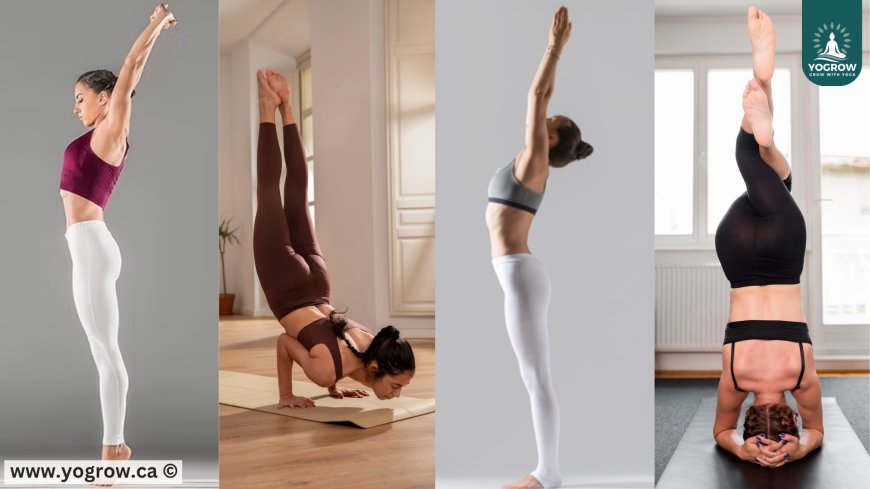The Still Power of Mountain Pose | Benefits of Tadasana for Beginners
Discover the still power of Mountain Pose (Tadasana)—a foundational yoga pose that improves posture, focus, and inner strength. Start your yoga journey here.

In a world that constantly demands movement, stillness becomes a form of strength. Mountain Pose (Tadasana), though deceptively simple, is the foundation of nearly every standing yoga posture. As the starting point of many practices, it represents not only physical alignment but also mental clarity and inner balance. In today’s fast-paced environment, understanding the power of stillness through Mountain Pose is more relevant than ever.
This article explores the significance of Mountain Pose, how it quietly anchors your entire practice, and why it remains an essential posture for both beginners and advanced yogis alike.
Significance of Mountain Pose
While it may appear as just standing still, Mountain Pose is a masterclass in alignment, breath awareness, and mindfulness. Below, we dive into the core reasons why this pose holds such profound importance in yoga practice.
1. Foundation of All Standing Poses
Tadasana isn't just a beginning—it's the blueprint. Every standing posture in yoga, from Warrior to Tree Pose, is built upon the alignment principles of Mountain Pose. When practitioners learn to root through their feet, elongate the spine, and engage their core in Tadasana, they establish proper alignment habits that prevent injuries and enhance performance across their entire practice.
According to Yoga Journal, this pose is essential for creating body awareness and postural intelligence, two key components that support longevity in yoga.
2. Cultivates Mindfulness and Presence
The stillness of Mountain Pose invites you to go inward. There is no flow, no stretch, no challenge to “achieve”—just you, your breath, and awareness of your body. In this way, it becomes a moving meditation, teaching presence and grounding.
Tadasana helps transition the mind from external distractions to internal focus. This makes it an ideal pose for those practicing yoga for stress relief, as discussed in our blog on yoga for stress relief: best poses & breathing techniques. Beginning or ending your day in Mountain Pose can train your nervous system to recognize safety in stillness.
3. Encourages Structural Alignment
Many of us live with subtle misalignments—slouched shoulders, tilted pelvis, or uneven weight distribution—that go unnoticed until pain sets in. Tadasana shines a light on these patterns.
Through mindful engagement and anatomical precision, Mountain Pose helps correct posture by stacking the joints and distributing weight evenly. This realignment can reduce back pain, enhance circulation, and improve your everyday posture off the mat.
As explained by Arhanta Yoga, this posture trains muscles to support the skeleton optimally, which is especially beneficial for those with sedentary lifestyles.
4. Balances Energy Flow (Prana)
In yogic philosophy, energy—or prana—flows freely when the body is aligned. Mountain Pose, by straightening the spine and opening the chest, removes blockages in energy channels, allowing prana to move with greater ease. This contributes to heightened awareness, improved breathing, and a feeling of lightness.
Practicing Tadasana regularly helps cultivate inner equilibrium. It acts as a reset button for your body’s energetic system, restoring harmony before moving into more dynamic flows.
5. Symbol of Inner Strength and Intention
Symbolically, a mountain stands tall, stable, and unshaken—exactly the qualities Tadasana aims to instill. It reminds us that true power lies in stability, not chaos. It sets the tone for the rest of your practice and life, anchoring your intentions in a quiet yet unwavering presence.
By starting your yoga flow with Tadasana, you set a mindful intention for your practice—bringing awareness to how you move, breathe, and feel.
Step-by-Step Guide to Practicing Mountain Pose
Despite its simplicity, Mountain Pose is best practiced with attention to detail. Follow these steps to master the art of stillness.
Step 1: Stand Tall with Feet Grounded
Begin with your feet hip-width apart (or together, depending on comfort). Distribute your weight evenly across all four corners of your feet—the base of the big toe, little toe, and both heels. Feel yourself rooted into the earth.
Step 2: Engage the Thighs and Core
Gently lift your kneecaps without locking the knees. Engage your quadriceps and draw your belly button inward to activate the core. Imagine your legs are strong pillars supporting your spine.
Step 3: Lengthen the Spine
Tuck your tailbone slightly to neutralize the pelvis. Elongate the spine by lifting the crown of your head toward the sky. Avoid overarching the lower back. Keep the chin parallel to the floor.
Step 4: Open the Chest and Roll Back the Shoulders
Relax your shoulders down and back, allowing the chest to open. Let your arms hang naturally by your sides with palms facing forward or inward, depending on preference.
Step 5: Find Your Breath and Focus
Close your eyes if comfortable. Take slow, deep breaths. With each inhale, feel your spine grow tall. With each exhale, root deeper into the ground. Hold for 5–10 breaths or as long as you’d like.
This guide aligns with traditional methods, such as those described by Arhanta Yoga, and serves as a strong starting point for any yoga journey.
Mountain Pose may look like "just standing," but its impact ripples throughout your entire yoga practice and daily life. From improving posture and balance to grounding your mind and setting your intentions, its quiet strength is the perfect reminder that big transformations begin with small, mindful steps.
Curious which yoga path suits your goals? Learn more in our blog on which yoga style is right for you and discover the flow that aligns with your inner stillness.
Ready to deepen your practice? Bookmark this article, try starting your day with Tadasana, and share your experience in the comments below. Let your yoga journey begin with the power of standing still.
What's Your Reaction?
 Like
0
Like
0
 Dislike
0
Dislike
0
 Love
0
Love
0
 Funny
0
Funny
0
 Angry
0
Angry
0
 Sad
0
Sad
0
 Wow
0
Wow
0























